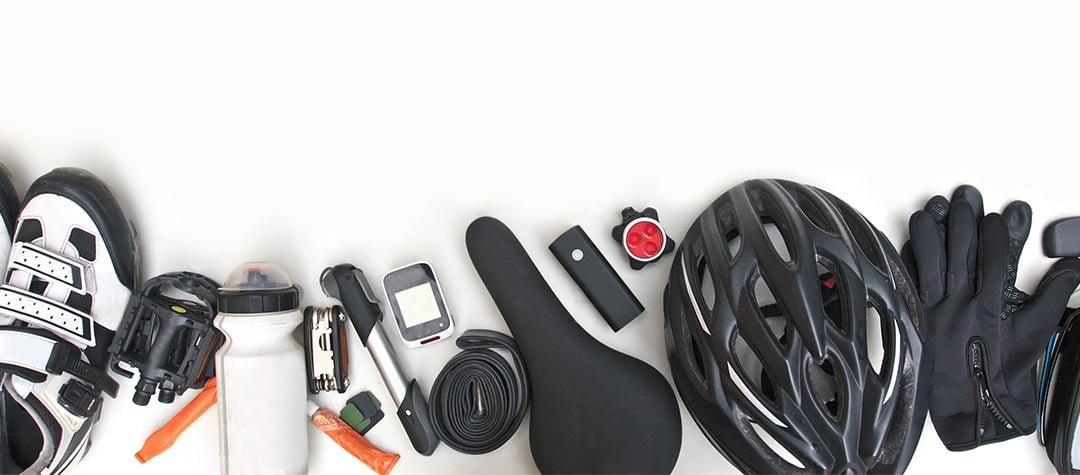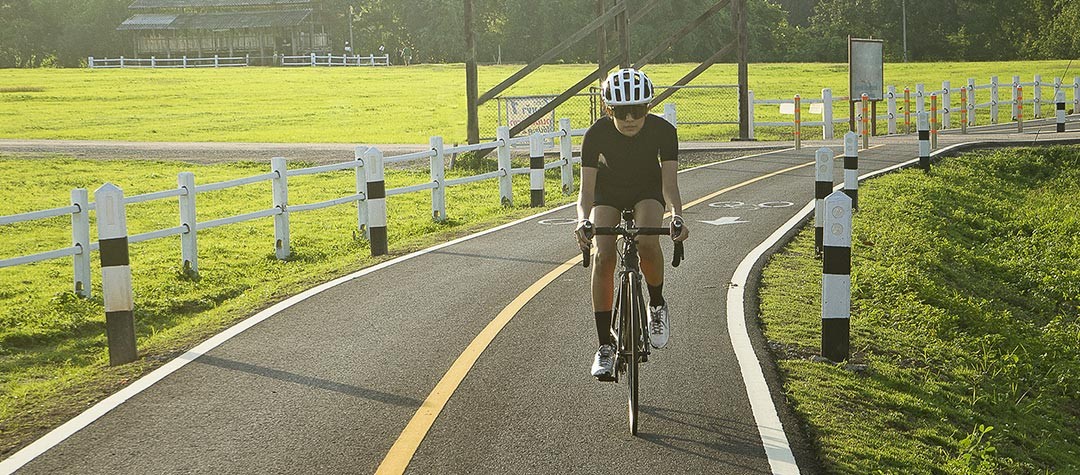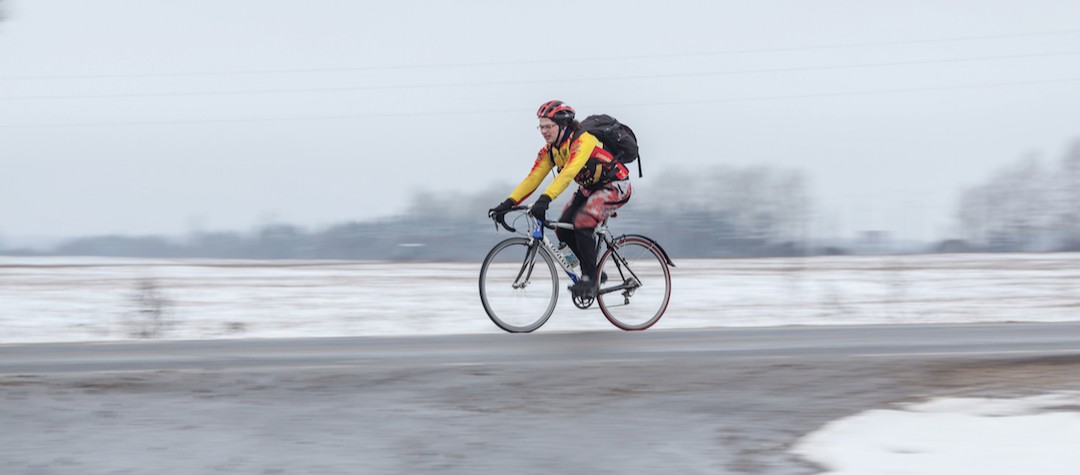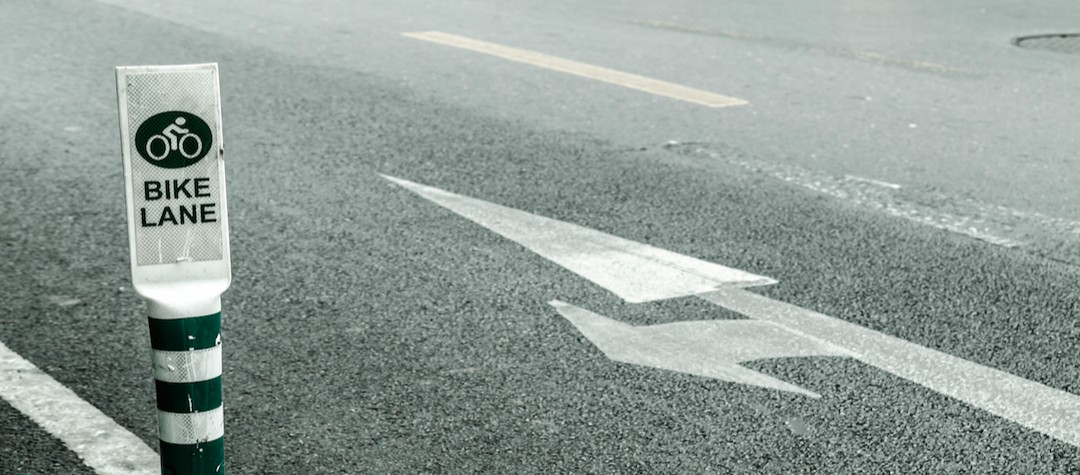You’ve bought the bike so what else do you need? Aside from your kit there are a number of additional accessories you should buy before you hit the road.
The accessories below have been split into those that you absolutely need for a ride, plus those that it would be useful to have at home to help with general maintenance of your bike.
What you need for a ride
Pump/CO2 inflator
This may seem obvious but you shouldn’t go anywhere without a means of inflating your tyres. Punctures can occur anywhere at any time and there’s nothing worst than being stranded kilometres away from home. Buy a decent hand pump (spending that bit more is worth it, trust us) or buy a CO2 inflator which works using pressurised gas canisters and can inflate your tyre in seconds.
Spare tubes
Always spare tube or two. You are better off just replacing the tube when you get a puncture rather than attempting a repair at the roadside. Just pack the leaking tube away and repair it when you get home. Even if you don’t need two tubes there’s a possibility that someone you are riding with might be thankful you have a spare.
Tyre levers
Naturally you’ll need something to lever your tyres off and while a few metal spoons might have been your choice in years gone by, it makes far more sense to carry something a bit more lightweight and that doesn’t rattle about so much. Plastic lever are ideal for the purpose and they usually stack well on one another so you can pack them away easily.
Puncture repair kit/patches
In the unlikely event of you getting multiple puncture so that you end up using up your spare tubes, it is always worth carrying something to carry out a puncture repair. You can use the traditional patch and glue method but it is far easier to use the self-adhesive patches that are readily available and take up far less room.
Seat bag
All of your on-the-road accessories have to be carried in something and a seat bag is the most convenient thing. You should be able to fit at least one of your spare tubes, plus levers, and patch kit in case of flats as well as an inflator. Get a bag that is easily removable so you can switch it between multiple bikes or take it off when you stop to prevent it being stolen.
Lights (front and rear)
Even if you don’t intend riding in the dark, having lights is a must. Many a time you may be held up, perhaps because of a puncture, and you then end up coming home that bit later than you intended. Not only do lights allow you to see where you're going, they also allow you to be seen. On another occasion you may be riding in areas surrounded by trees where visibility is not great and a good rear light may be the difference between being seen or not.
Multi-tool containing allen keys
A multi-tool will allow you to carry out minor repair and adjustments while out riding. Even if you don’t have much of a clue, then other riders will be able to help you out if you have the right tools. You multi-tools should a selection of Allen keys, a screwdriver, and chain link extractor among other things. A spare chain link is always worth carrying with this.
Water bottle and cage
Bottle cages should fit any bike and many bikes have the facility to fit two cages so you can carry two bottles, if requires. Cycling long distances without a drink isn’t recommended so don’t ride without one if you are going to be riding for more than an hour, or on a particularly hot day.
Cycle computer
While not an absolute essential, having a way to help you measure your speed, distance and progress has to be a good thing. Many have GPS capability so they can also help you find your way home. If you don’t want to pay out for one then a phone app will often do just as good a job.
Bike lock
If your rides are going to require you to stop somewhere en route, even just for a toilet or snack break and you are going to have to leave your bike then a lock will be required. It may not be practical to carry with you a super-heavyweight lock with you on a ride, so even a portable small lock might just be enough deterrent for the opportunist bike thief. If you are using you bike for a commute to to work then just leave your hefty lock at work!
After a ride your thoughts are going to have to turn to looking after your bike. A few additional accessories should help you keep your bike in good working order.
What you need at home
Bike cleaner
Keep your bike in tip top condition by ensuring you clean it frequently. A good bike cleaning product you should be able to use all over your bike including your chain and drivetrain. Just remember when washing your bike not to use a high power pressure washer as water will ingress in parts where it ideally should, such as the bearings.
Chain lube and maintenance spray
After thoroughly cleaning your bike you need to lubricate all moving parts. A good chain lube (either a ‘wet lube’ of greater viscosity if the bulk of your riding is to be done in wet conditions, or a ‘dry lube’ for drier conditions) should be used. On other areas you should use a general maintenance spray to eliminate any water ingress and potential rust, but not on your brake blocks!
Work station/repair stand
It is far easier to clean or work on your bike if you are not having to worry about keeping it upright. Whether degreasing the chain or tweaking the gears, a good bike stand will make your job that much easier and your back will thank you for it as your not constantly having to bend over your bike!
General maintenance tool kit
A good general bike maintenance tool kit will contain the majority of tools you’ll need to carry out the most basic of of repairs and maintenance and more besides. Rather than buying tools separately, which will work out overly expensive, a tool kit will make it far easier and cheaper.
Track pump
Inflating your tyres by hand can be hard work and you’ll need to inflate your bike tyres more frequently than you do a car. When you are home, instead use a track pump which allows you to hold it in place with your feet while you inflate in seconds. Keep your pressures high helps with performance and also reduces your chances of getting flats.
Storage stand
Often you have to put your bike away leaned up against a wall of stacked against other bikes. Instead, get yourself a bike stand which is free-standing and allow you to keep the bike upright without it having to lean on anything else at all. This helps keep your pride and joy safe from unnecessary scuffs and other marks.














